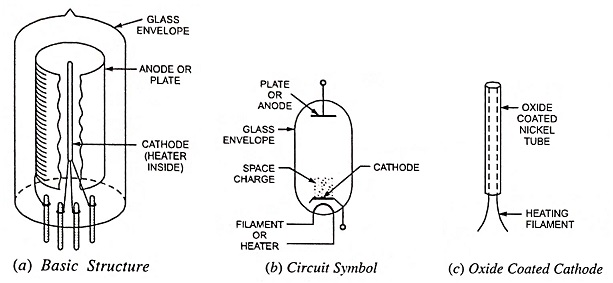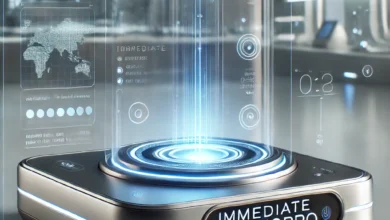What is Vacuum? : A Comprehensive Guide
What is Vacuum? Understanding the Concept and Applications

Table of Contents
- Introduction to Vacuum
- The Science Behind a Vacuum
- Types of Vacuum
- Perfect Vacuum
- Partial Vacuum
- High Vacuum
- Ultra-High Vacuum
- Applications of Vacuum
- Industrial Applications
- Scientific Uses
- Medical Uses
- Household Applications
- How to Create a Vacuum
- Vacuum in Space
- Advantages and Disadvantages of Using Vacuum
- Final Thoughts
- Frequently Asked Questions

Introduction to Vacuum
What is a vacuum? In simple terms, a vacuum refers to a space devoid of matter where the pressure is significantly lower than atmospheric pressure. The term “vacuum” might invoke images of space, household cleaners, or scientific laboratories. While vacuums are often associated with outer space, they play crucial roles in various scientific and industrial applications.
A vacuum, by definition, is the absence of matter—specifically, gas molecules. While achieving a perfect vacuum is nearly impossible, varying degrees of vacuum are utilized in different fields, from household devices like vacuum cleaners to sophisticated research equipment like particle accelerators.
The Science Behind a Vacuum
A vacuum occurs when the pressure within a space is less than the surrounding atmospheric pressure. This pressure is measured in units such as Pascals (Pa) or Torr in physics. The fewer molecules within a space, the lower the pressure and the higher the vacuum level.
- Pressure in a vacuum: Atmospheric pressure at sea level is approximately 101,325 Pascals (Pa). In comparison, a vacuum is any pressure below that value. The “degree of vacuum” is expressed in terms of how much lower the pressure is compared to the atmosphere. For instance, a partial vacuum might have a pressure of 10,000 Pa, while an ultra-high vacuum could have pressures as low as 1×10^-9 Pa.
- Vacuum physics: The physics of vacuums is fundamental to many processes, such as the behaviour of gases, thermodynamics, and fluid dynamics. When molecules are removed from a space, their interactions, temperature, and behaviour change significantly, leading to conditions often exploited in technology and research.
Types of Vacuum
Different industries and scientific fields require varying degrees of vacuum. Below are some of the most common types:
Perfect Vacuum
A perfect vacuum is an ideal state where all matter, including gas molecules, has been removed from space. In reality, this is impossible to achieve since even the most advanced systems can only reduce the presence of matter to a certain level. However, the idea of a perfect vacuum is essential in theoretical physics and cosmology.
Partial Vacuum
A partial vacuum is one where the pressure is lower than the atmospheric pressure but not near zero. This type of vacuum is commonly used in household applications, such as vacuum cleaners, where a low-pressure environment is created to remove dust and debris.
High Vacuum
A high vacuum is a more refined form of vacuum with much lower pressure than a partial vacuum, typically ranging between 10^-3 to 10^-7 Pa. High vacuums are commonly used in laboratories for experiments involving electron microscopy or mass spectrometry.
Ultra-High Vacuum
An ultra-high vacuum involves even lower pressures, often below 10^-7 Pa. These conditions are required for certain types of advanced scientific research, such as in particle accelerators or in the manufacturing of semiconductors.
Applications of Vacuum
The concept of vacuum has various applications across different fields:
Industrial Applications
In industries, vacuums are used for numerous purposes:
- Vacuum pumps are used in manufacturing to remove gases from a sealed environment, which is crucial for producing items like light bulbs, semiconductors, and certain types of batteries.
- Vacuum coating is used to apply thin films of materials to surfaces, often to create durable or reflective coatings on lenses, electronics, or glass.
Scientific Uses
In scientific research, vacuums are essential for conducting experiments that require controlled environments. For example:
- Particle accelerators use high vacuums to create an environment free from air and other gases, allowing particles to move unimpeded.
- Electron microscopes require a vacuum to operate effectively, as air molecules would interfere with the movement of electrons.
- Space simulations also use vacuums to mimic the conditions of outer space, which is crucial for testing space suits and other equipment.
Medical Uses
In the medical field, vacuums are used in various applications:
- Vacuum-assisted devices help surgeons perform minimally invasive surgeries, like liposuction or specific endoscopic procedures.
- Vacuum therapy is used for wound healing, applying controlled negative pressure to accelerate healing.
Household Applications
In everyday life, vacuums are most commonly associated with vacuum cleaners. These devices use partial vacuums to suck up dirt, dust, and debris from floors and other surfaces. Other common household uses include food preservation, where vacuum-sealed bags prolong the shelf life of perishable items.
How to Create a Vacuum
Creating a vacuum involves removing air or gas from a sealed space. This process typically requires the use of a vacuum pump:
- Mechanical vacuum pumps physically displace gas from a chamber, reducing pressure.
- Diffusion pumps use a stream of vaporized oil or another fluid to trap gas molecules and remove them from a chamber.
- Cryogenic pumps freeze gas molecules, trapping them in a solid or liquid state.
Vacuum in Space
The vacuum of space is the most well-known example of a natural vacuum. In the vast expanse of the universe, the pressure is almost zero, with very few gas molecules present. While space is not a perfect vacuum, it is close to what is known as an “ultra-high vacuum.”
In space, the lack of air pressure can dramatically affect objects and living organisms. Without the protective layer of the Earth’s atmosphere, exposure to a vacuum causes liquids to boil away and gases to expand uncontrollably. Space agencies like NASA conduct extensive research into how to protect astronauts and equipment from the harsh vacuum of space.
Advantages and Disadvantages of Using Vacuum
Advantages:
- Controlled Environment: Vacuums provide a controlled environment for scientific experiments and industrial processes, ensuring minimal interference from air or other gases.
- Efficiency: Vacuums allow for more precise and efficient operations in industrial processes like coating or manufacturing.
- Durability: Vacuum-sealed products, such as electronics or food, tend to last longer due to the absence of air and moisture.
Disadvantages:
- Complexity: Creating and maintaining a high or ultra-high vacuum requires specialized equipment and is often expensive.
- Safety Risks: Exposure to vacuum can be dangerous in certain conditions, especially in space exploration or industrial accidents.
- Equipment Wear: Vacuum pumps and other equipment can wear out quickly due to their harsh conditions.
Final Thoughts
A vacuum is more than just a space—it’s a crucial component of modern technology and scientific research. From space exploration to everyday household cleaning, vacuums offer various applications that impact our daily lives. Understanding the different types of vacuums and their uses allows us to appreciate their role in advanced technology and simple daily tasks.
Frequently Asked Questions
1. What is the most common use of a vacuum?
The most common use of a vacuum is in household vacuum cleaners, which create a partial vacuum to remove dirt and dust from surfaces.
2. Can a perfect vacuum be created?
No, a perfect vacuum cannot be created. Even in the most advanced systems, some gas molecules remain, making it impossible to achieve an ideal vacuum.
3. What is the vacuum of space?
The vacuum of space refers to the near-total absence of matter in outer space, where there are shallow pressures due to the lack of air and other gases.
4. How do vacuums help in manufacturing?
Vacuums are used in manufacturing to create controlled environments for producing semiconductors, batteries, and coatings, where air and moisture interfere with the process.
5. What are the risks of working with vacuums?
Working with vacuums can be dangerous due to the extreme pressures involved. Equipment can fail, and exposure to a vacuum in space can cause rapid decompression and damage living tissue.
Category for Publishing
This article would be best suited under a “Science & Technology” or “Physics” category due to its focus on the scientific principles of vacuums and their applications across different fields.
Sources:
- NASA’s Space Vacuum Research
- Vacuum Science at CERN
- Vacuum Technology in Industry
4o




